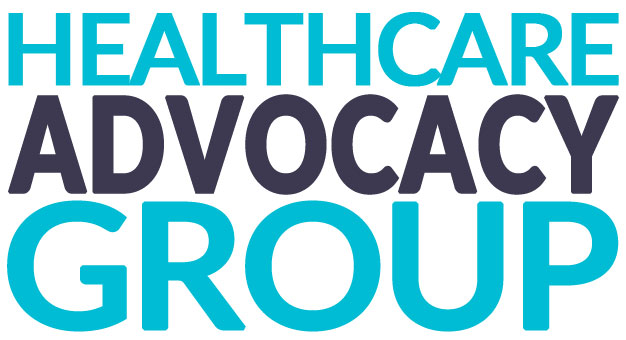What FARXIGA Is Used For?
The FDA approved dapagliflozin on January 8, 2014 for glycemic control, along with diet and exercise, in adults with type 2 diabetes. SGLT2 inhibitors, including dapagliflozin, reduce the likelihood of hospitalization for congestive heart failure or progression of renal disease in persons with diabetes mellitus type 2 and reduce the likelihood of stroke and heart attack in persons with diabetes mellitus type 2 who have known atherosclerotic vascular disease.
HOW FARXIGA WORKS?
Farxiga (dapagliflozin) is an oral diabetes medicine that helps control blood sugar levels. Dapagliflozin works by helping the kidneys get rid of glucose from your bloodstream.
Farxiga is used together with diet and exercise to improve blood sugar control in adults with type 2 diabetes mellitus.
Read More
Farxiga is not for treating type 1 diabetes.
SYMPTOMS & SIDE EFFECTS OF FARXIGA
- Dehydration (the loss of body water and salt), which may cause you to feel dizzy, faint, lightheaded, or weak, especially when you stand up (orthostatic hypotension). You may be at a higher risk of dehydration if you have low blood pressure; take medicines to lower your blood pressure, including water pills (diuretics); are 65 years of age or older; are on a low salt diet, or have kidney problems.
- Ketoacidosis occurred in people with type 1 and type 2 diabetes during treatment with FARXIGA. Ketoacidosis is a serious condition which may require hospitalization and may lead to death. Symptoms may include nausea, tiredness, vomiting, trouble breathing, and abdominal pain. If you get any of these symptoms, stop taking FARXIGA and call your healthcare provider right away. If possible, check for ketones in your urine or blood, even if your blood sugar is less than 250 mg/dL.
Read More
- Kidney problems. Sudden kidney injury occurred in people taking FARXIGA. Talk to your doctor right away if you reduce the amount you eat or drink, or if you lose liquids; for example, from vomiting, diarrhea, or excessive heat exposure.
- Serious urinary tract infections (UTI), some that lead to hospitalization, occurred in people taking FARXIGA. Tell your doctor if you have any signs or symptoms of UTI including a burning feeling when passing urine, a need to urinate often, the need to urinate right away, pain in the lower part of your stomach (pelvis), or blood in the urine with or without fever, back pain, nausea, or vomiting.
- Low blood sugar (hypoglycemia) can occur if you take FARXIGA with another medicine that can cause low blood sugar, such as sulfonylureas or insulin. Symptoms of low blood sugar include shaking, sweating, fast heartbeat, dizziness, hunger, headache, and irritability. Follow your healthcare provider’s instructions for treating low blood sugar.
- Bacterial infections under the skin of the genitals and areas around them. Rare but serious infections that cause severe tissue damage under the skin of the genitals and areas around them have happened with FARXIGA. This infection has happened in women and men and may lead to hospitalization, surgeries and death. Seek medical attention immediately if you have fever or you are feeling very weak, tired or uncomfortable and you also develop any pain or tenderness, swelling, or redness of the skin in the genitals and areas around them.
- Vaginal yeast infections in women who take FARXIGA. Talk to your healthcare provider if you experience vaginal odor, white or yellowish vaginal discharge (discharge may be lumpy or look like cottage cheese), or vaginal itching.
- Yeast infection of skin around the penis (balanitis) in men who take FARXIGA. Talk to your healthcare provider if you experience redness, itching, or swelling of the penis; rash of the penis; foul smelling discharge from the penis; or pain in the skin around penis. Certain uncircumcised men may have swelling of the penis that makes it difficult to pull back the skin around the tip of the penis.
- Increase in bad cholesterol (LDL-C). Your healthcare provider should check your LDL-C during treatment with FARXIGA.
- Bladder cancer. In studies of FARXIGA in people with diabetes, bladder cancer occurred in a few more people who were taking FARXIGA than in people who were taking other diabetes medications. There were too few cases of bladder cancer to know if bladder cancer was related to FARXIGA. Tell your healthcare provider right away if you have blood or a red color in your urine or pain while you urinate.
The most common side effects of FARXIGA include yeast infections of the vagina or penis, and changes in urination, including urgent need to urinate more often, in larger amounts, or at night.
Latest FARXIGA News & Recalls
Since it’s approval for the market, Farxiga has been associated with a range of adverse events and complications. The FDA has issued numerous warnings and safety communications involving Farxiga including:
Read More
- May 2015 – FDA warns Farxiga and other SGLT2i drugs may result in ketoacidosis, a condition in which there is too much acid in the blood. This condition may result in hospitalization.
- 2015 – FDA revises labels of Farxiga and other SGLT2i drugs to include warnings about ketoacidosis and severe urinary tract infections.
- 2015 – FDA warns of potential signals of serious risks identified by the agency’s Adverse Event Reporting system involving Farxiga and other SGLT2i drugs and acute kidney injury
- June 2016 – FDA strengthens existing warning about the risk of acute kidney injury for Farxiga, Invokana, Invokamet, and Xigduo XR.
- 2017 – FDA warns of potential signals of serious risks identified in the Adverse Events Reporting System involving Farxiga and other SGLT2i drugs and Fournier’s gangrene.
- 2018 – FDA warns of rare occurrences of a serious infection of genitals and the area around the genitals called necrotizing fasciitis of the perineum or Fournier’s gangrene. The new warning is added to labels of all SGLT2i drugs including Farxiga.
Lawsuits & Settlements
Type 2 diabetes is considered today as one of the most serious health crises with more than 3 million cases per year in the United States. Unfortunately, some medications used to treat this very common condition can cause some patients to develop unusual conditions, such as genital gangrene, ketoacidosis, and amputations.
Injuries sustained by patients receiving Farxiga or another drug included in the classification of SGLT2 inhibitors may result in costly medical treatment, additional home health care, the need for expensive life aids, and modifications to the home. . Hundreds of patients have called our help lines in case of injuries to seek legal advice and many want Farxiga’s manufacturer, AstraZeneca, to be held responsible through a lawsuit against Farxiga.
Read More
Many victims of dangerous drugs have received agreements and subsidies to help them compensate for their losses. In some cases, families of patients who died from complications of diabetes medications were eligible for an unjustified death benefit.
Most of the Farxiga lawsuits filed on behalf of patients accuse the manufacturer of:
- Manufacturing and distributing a dangerous or defective medication
- Failing to adequately warn the medical community and its patients about the risks of adverse events associated with the drug
- Knowingly concealing risks from the medical community
- Improper marketing and advertising of the medication
These patients are demanding to know when AstraZeneca knew or should have known about the increased risks of severe adverse events and why they didn’t inform the public of those risks.
Legal Assistance
Farxiga lawsuits continue to mount against pharma giant AstraZeneca over allegations the drug increased the risks of acute kidney injury, bone fractures, and a dangerous condition in which the blood becomes acidic called ketoacidosis.
In 2017, with so many Farxiga lawsuits filed, the U.S. Judicial Panel on Multidistrict Litigation ordered all federally-filed cases be centralized to U.S. District Court for the Southern District of New York.
HOW TO FILE A CLAIM
Do you want to learn if you have a case? The lawsuits are being filed on behalf of those patients who suffered:
- Fournier’s disease
- Fournier’s gangrene
- Flesh-eating bacteria
- Gangrene of the genitals
- Necrotizing fasciitis of the perineum
- Necro-fasciitis of the genitals
- Necrotizing fasciitis of the genitalia
The suit claims that the drug makers failed to properly warn patients and doctors of the most severe side effects of these drugs, causing additional injuries.
Lawyers expect that thousands of patients will ultimately come forward with injuries to file claims. As is often the case with drug injury lawsuits, cases may eventually be consolidated in a central federal court for expedited handling.
A lawyer can speak with you today to determine if your case qualifies, and it costs nothing to investigate or file your claim unless you receive compensation.







